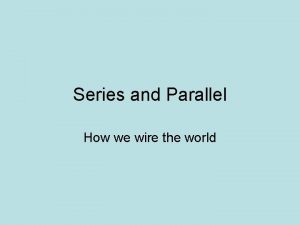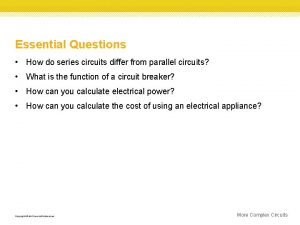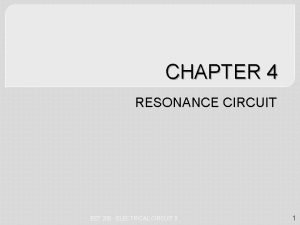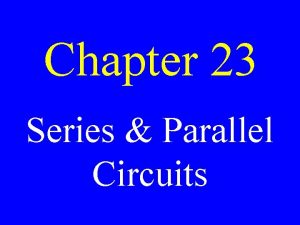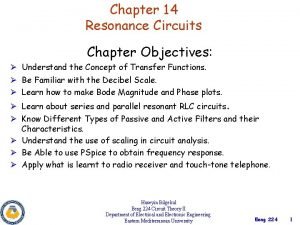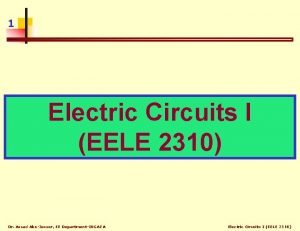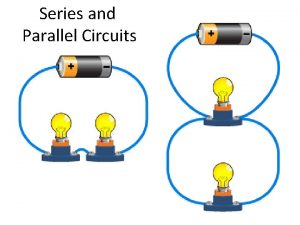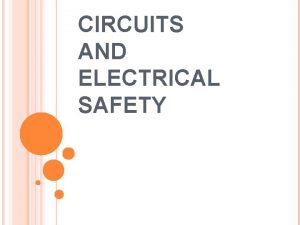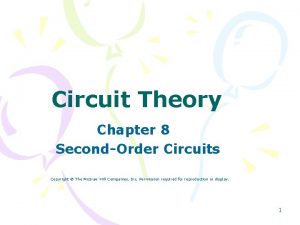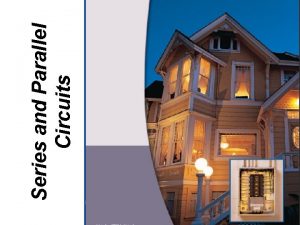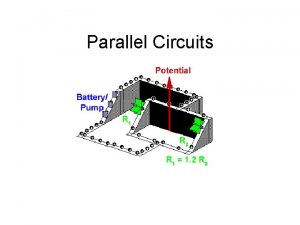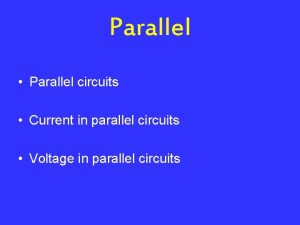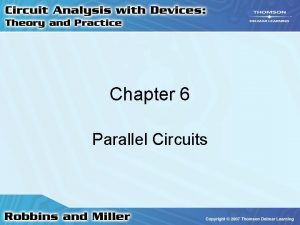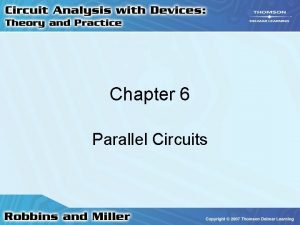Series and Parallel Circuits Science 9 Series Circuits












- Slides: 12

Series and Parallel Circuits Science 9

Series Circuits • A circuit that has only one path for the electrons to follow is called a series circuit. • If the switch is opened, or a light bulb is removed or burns out, all of the electrons must stop.

Parallel Circuits • A circuit that has more than one possible path for electrons to follow is called a parallel circuit. • The electrons have more than one possible way to get from the negative terminal of the battery to the positive terminal.

Voltage , Current and Resistance in Series Circuits • In a series circuit, the charge that leaves the battery “loses” all of its voltage before returning to the battery. • The sum of the voltage lost on the loads (in this case, light bulbs), equals the total voltage of the battery.

Voltage , Current and Resistance in Series Circuits • BUT…in a series circuit, the current stays the same all through the entire circuit, no matter where we measure the current.

Voltage , Current and Resistance in Series Circuits • When you place resistors in series, it increases the total resistance of the circuit – the resistances just get added together. This means that the total current moving through the circuit will be decreased.

Voltage, Current and Resistance in a Parallel Circuit • The voltage in a parallel circuit stays the same, no matter where you measure it.

Voltage, Current and Resistance in a Parallel Circuit • The current does not stay the same throughout a parallel circuit because the electrons get split up between multiple pathways.

Voltage, Current and Resistance in a Parallel Circuit • The location where a circuit divides into multiple paths, or where multiple paths join, is called a junction point. • The current across different resistors will be different, but the amount of current entering a junction point must be equal to the amount of current exiting the junction.

Voltage, Current and Resistance in a Parallel Circuit • Resistors placed in parallel decrease the total resistance of the circuit.

Find the current through resistor 2. Find the voltage across resistor 2.

Find the current through resistor 2. Find the voltage across resistor 2.
 What is a parallel circuit in physics
What is a parallel circuit in physics Pros and cons of series and parallel circuits
Pros and cons of series and parallel circuits Difference between series and parallel circuits
Difference between series and parallel circuits How do series and parallel circuits differ?
How do series and parallel circuits differ? Series and parallel circuits
Series and parallel circuits Chapter 23 series and parallel circuits
Chapter 23 series and parallel circuits Series and parallel circuits
Series and parallel circuits Lesson 8 comparing series and parallel rlc circuits
Lesson 8 comparing series and parallel rlc circuits Equivalent resistance of a parallel circuit
Equivalent resistance of a parallel circuit Bill nye static electricity
Bill nye static electricity Similarities of series and parallel circuits
Similarities of series and parallel circuits Every circuit must have
Every circuit must have Lesson 8: comparing series and parallel rlc circuits
Lesson 8: comparing series and parallel rlc circuits

